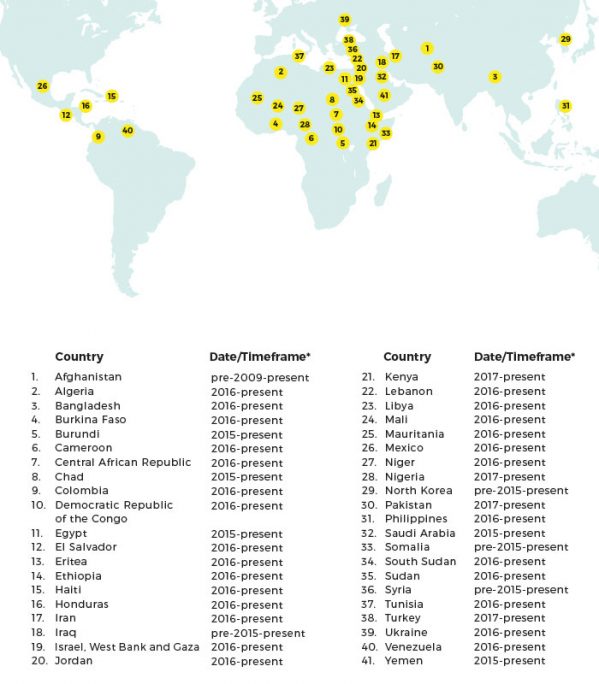Skift Take
Travel warnings and alerts are important to many travelers, and any country that cares about tourism tries to avoid getting on such a list. But the U.S. State Department's list is often selective and political, and isn't an exhaustive list of places where travelers could face danger.
 Skift launched the latest edition of our magazine, Travel in an Age of Permanxiety, at Skift Global Forum in New York City in September. This article is part of our look into the current state of the traveler mindset through the lens of the pervasive case of anxiety felt worldwide.
Skift launched the latest edition of our magazine, Travel in an Age of Permanxiety, at Skift Global Forum in New York City in September. This article is part of our look into the current state of the traveler mindset through the lens of the pervasive case of anxiety felt worldwide.
Download the full version of Skift’s Travel in an Age of Permanxiety magazine here.
The U.S. Department of State regularly issues travel warnings and alerts, or updates existing warnings, to help make travelers aware of potential dangers they face at their destinations.
Because of a lack of specifics, and bias toward traditional destinations, the list often seems like a blanket warning to stay away from some of the more interesting destinations, in addition to painting them with a broad brush that simply says, “stay away.” A focus on generalities – especially under the current administration – does more to add to anxieties than contribute to understanding safety and security.
Travel warnings, the more severe of the two advisories from the State Department, are issued for reasons such as unstable government, civil war, ongoing intense crime or violence, or frequent terrorist attacks. In theory, they are meant to make travelers consider carefully whether they should go to a country, according to the State Department. Travel alerts are issued for short-term events that might include a contentious election season, demonstrations, or disturbances; a health alert like an outbreak of H1N1, or evidence of an elevated risk of terrorist attacks.
Skift recently reviewed U.S. warnings and alerts from 2015 to 2017 and found 40 active travel warnings and two alerts — one for Europe and one for the 2017 hurricane and typhoon season. Travel warnings during the past two years have been concentrated in Africa, Central America and the Middle East with some warnings like those for Afghanistan, Iraq, and Syria in place before 2015. Most travel warnings in recent years have been issued for threats of violence and terrorist activity.
But this is a two-way street. Multiple countries also warned against travel to the United States. In 2016 and 2017, the United States was on the receiving end of alerts from the United Arab Emirates, Bahamas, France, Turkey, United Kingdom, Canada, New Zealand and Germany.
U.S. Department of State Travel Warnings And Alerts 2015-2017

The Daily Newsletter
Our daily coverage of the global travel industry. Written by editors and analysts from across Skift’s brands.
Have a confidential tip for Skift? Get in touch
Tags: permanxiety, sgf2017, skift global forum
Photo credit: Protests, such as the one pictured in Istanbul, cause governments to issue travel warnings and alerts to caution travelers to stay away. Eser Karadağ / Flickr
